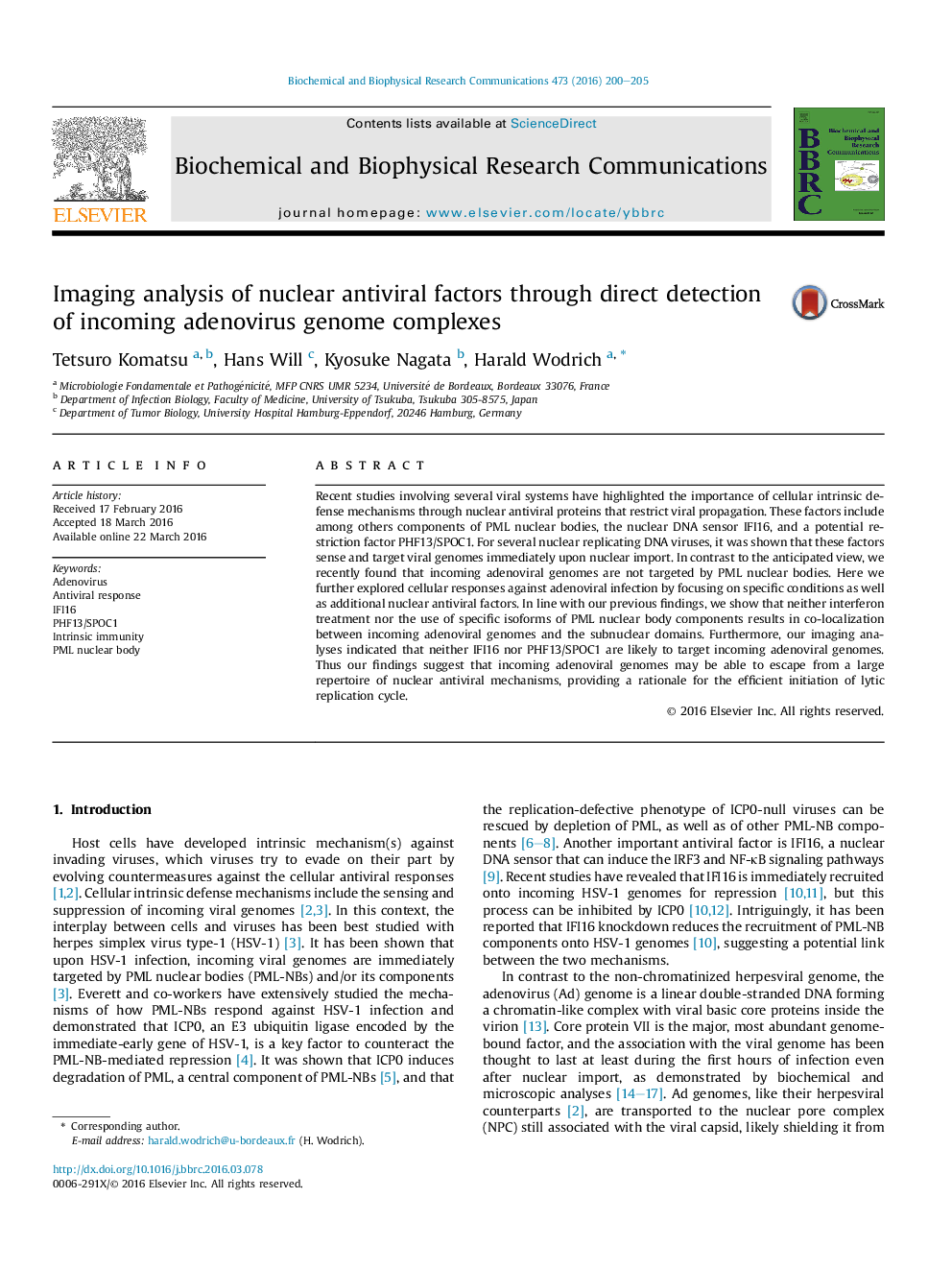| Article ID | Journal | Published Year | Pages | File Type |
|---|---|---|---|---|
| 1927878 | Biochemical and Biophysical Research Communications | 2016 | 6 Pages |
•Host nuclear antiviral factors were analyzed upon adenovirus genome delivery.•Interferon treatments fail to permit PML nuclear bodies to target adenoviral genomes.•Neither Sp100A nor B targets adenoviral genomes despite potentially opposite roles.•The nuclear DNA sensor IFI16 does not target incoming adenoviral genomes.•PHF13/SPOC1 targets neither incoming adenoviral genomes nor genome-bound protein VII.
Recent studies involving several viral systems have highlighted the importance of cellular intrinsic defense mechanisms through nuclear antiviral proteins that restrict viral propagation. These factors include among others components of PML nuclear bodies, the nuclear DNA sensor IFI16, and a potential restriction factor PHF13/SPOC1. For several nuclear replicating DNA viruses, it was shown that these factors sense and target viral genomes immediately upon nuclear import. In contrast to the anticipated view, we recently found that incoming adenoviral genomes are not targeted by PML nuclear bodies. Here we further explored cellular responses against adenoviral infection by focusing on specific conditions as well as additional nuclear antiviral factors. In line with our previous findings, we show that neither interferon treatment nor the use of specific isoforms of PML nuclear body components results in co-localization between incoming adenoviral genomes and the subnuclear domains. Furthermore, our imaging analyses indicated that neither IFI16 nor PHF13/SPOC1 are likely to target incoming adenoviral genomes. Thus our findings suggest that incoming adenoviral genomes may be able to escape from a large repertoire of nuclear antiviral mechanisms, providing a rationale for the efficient initiation of lytic replication cycle.
